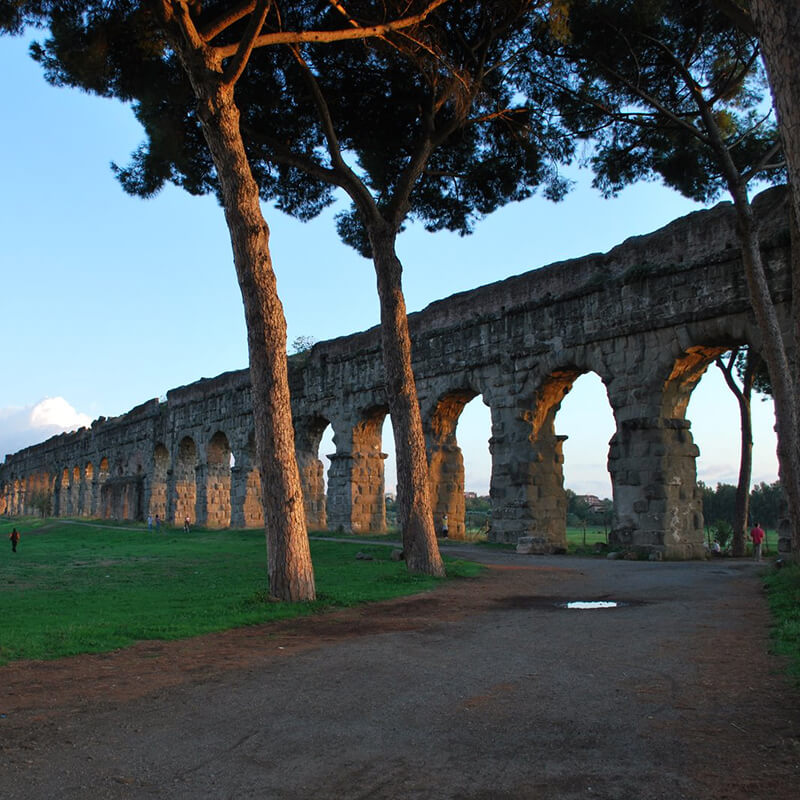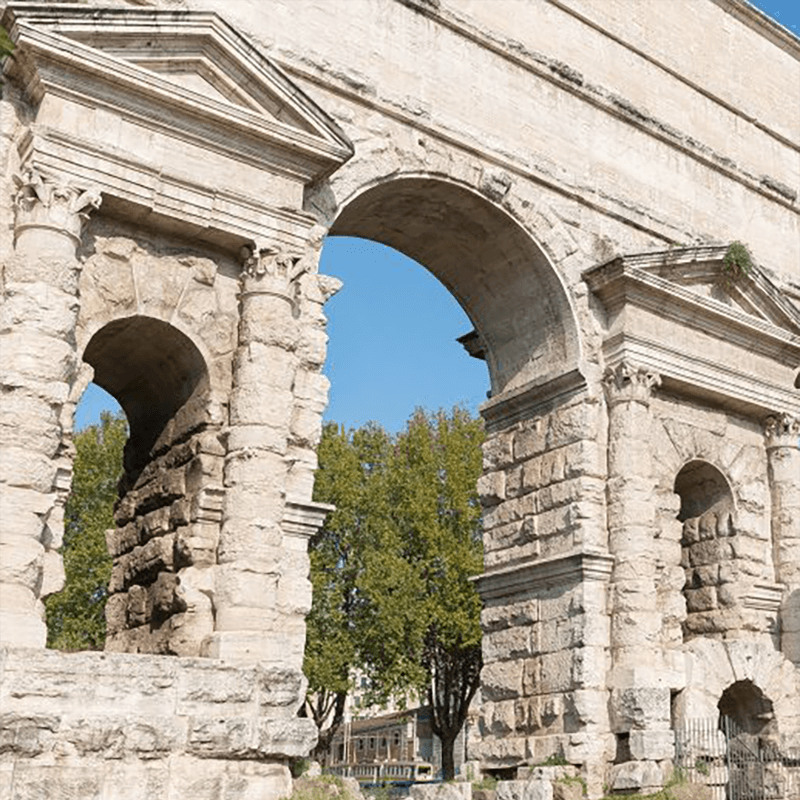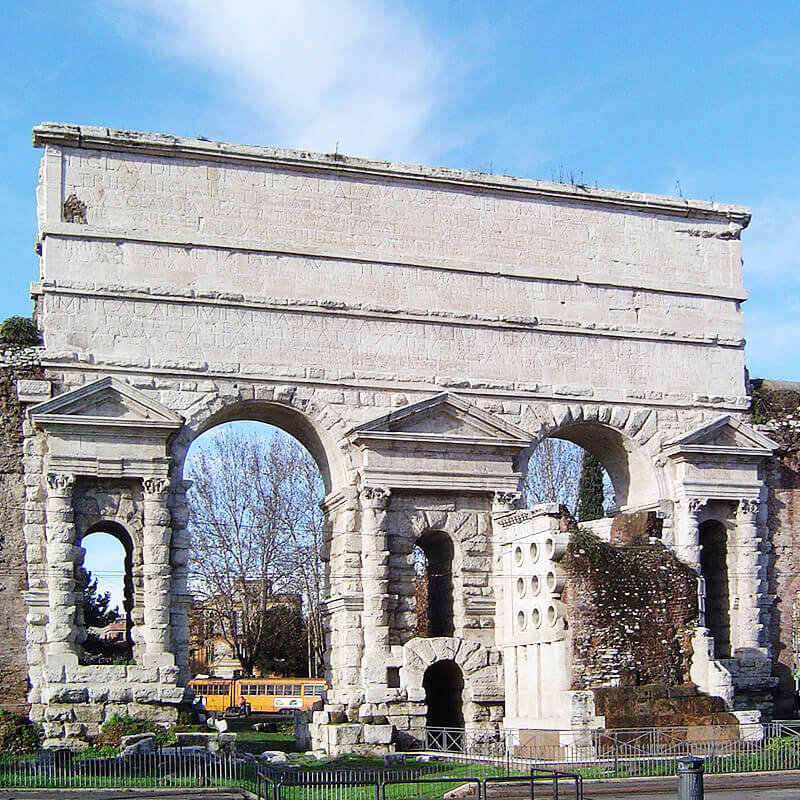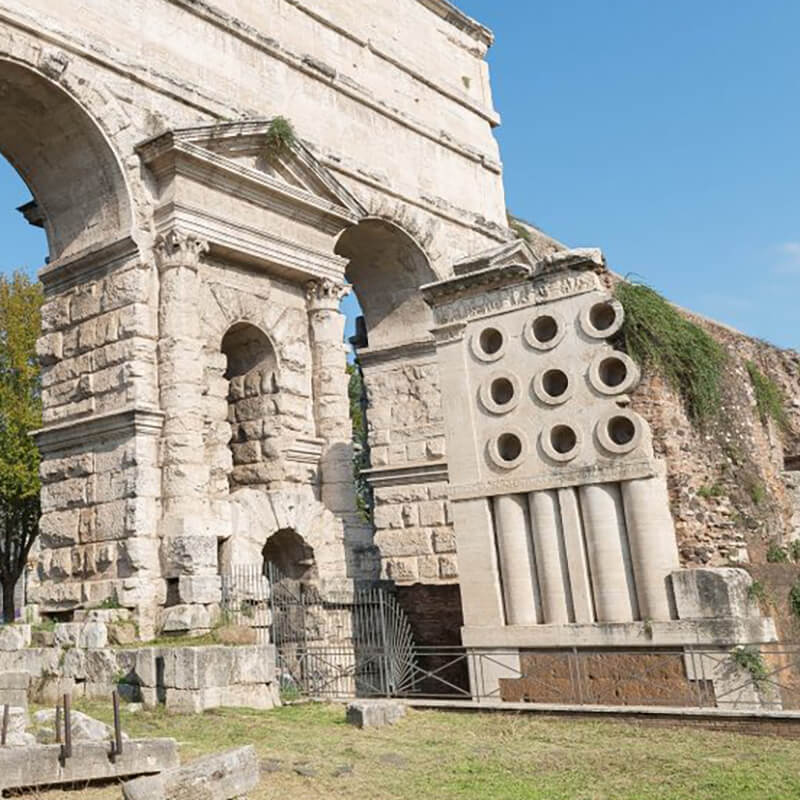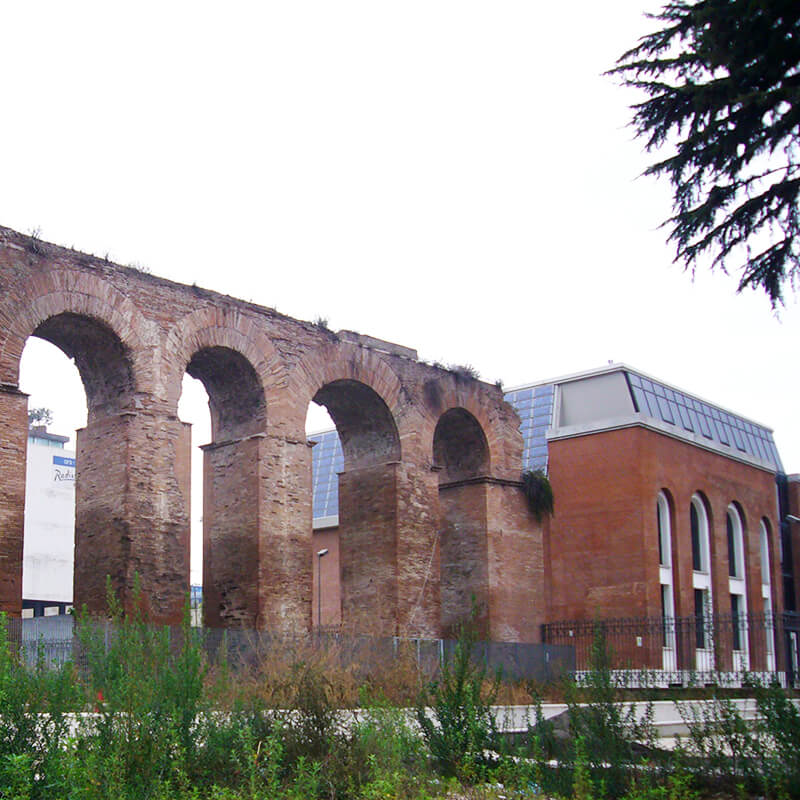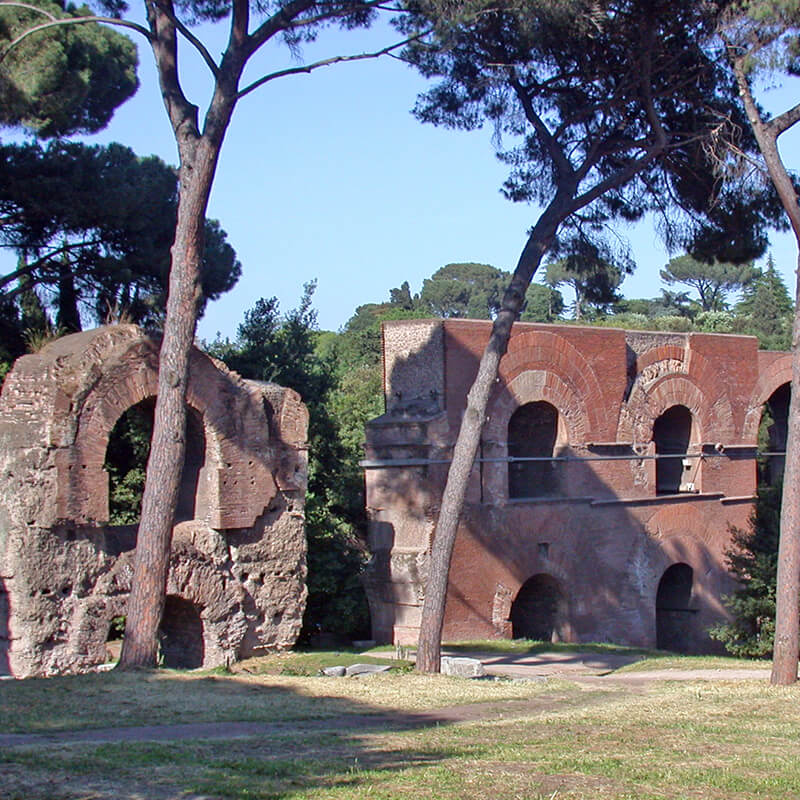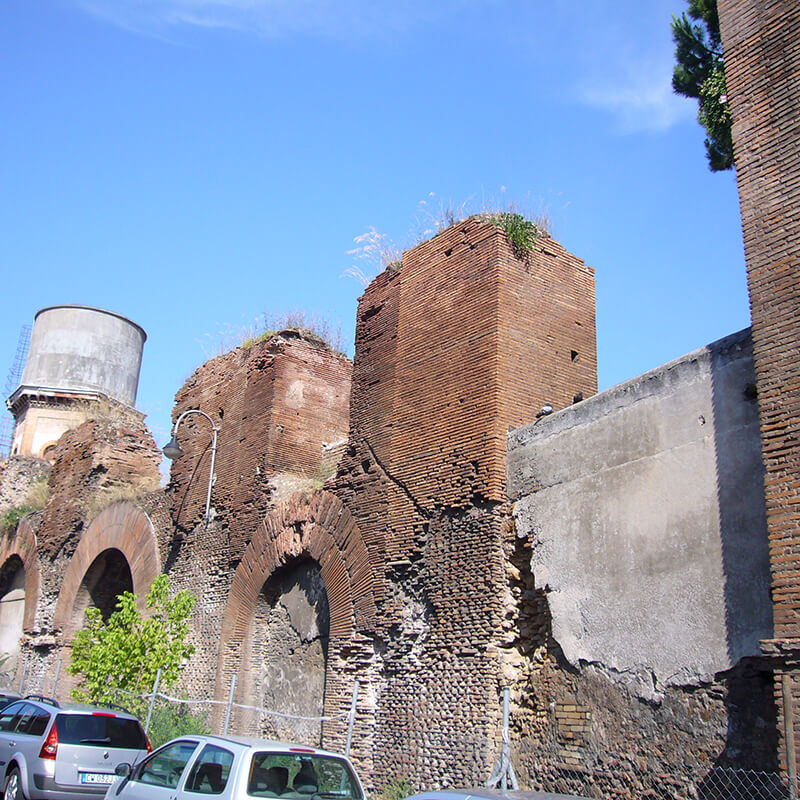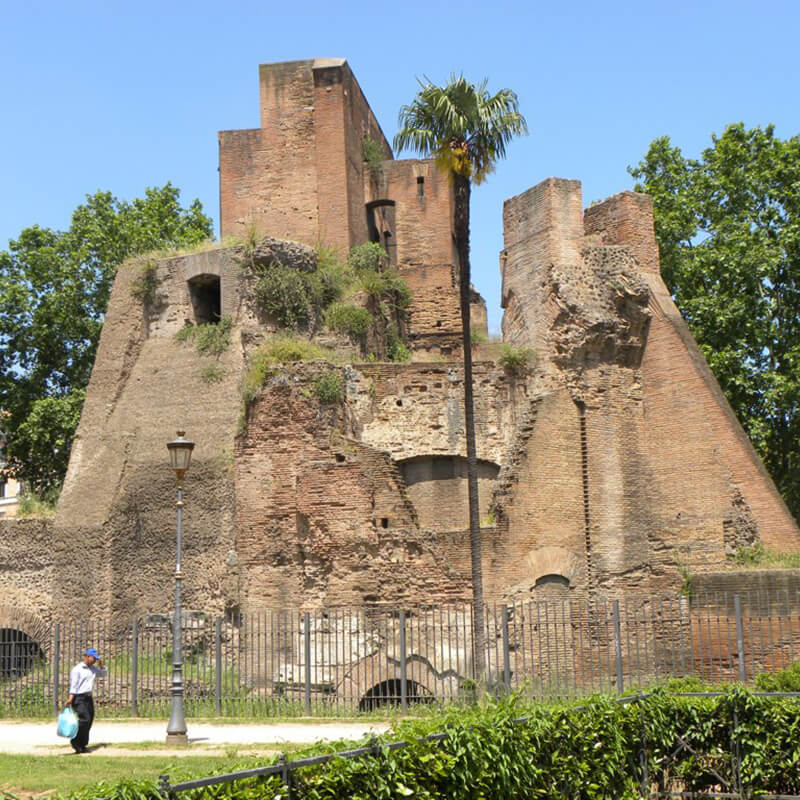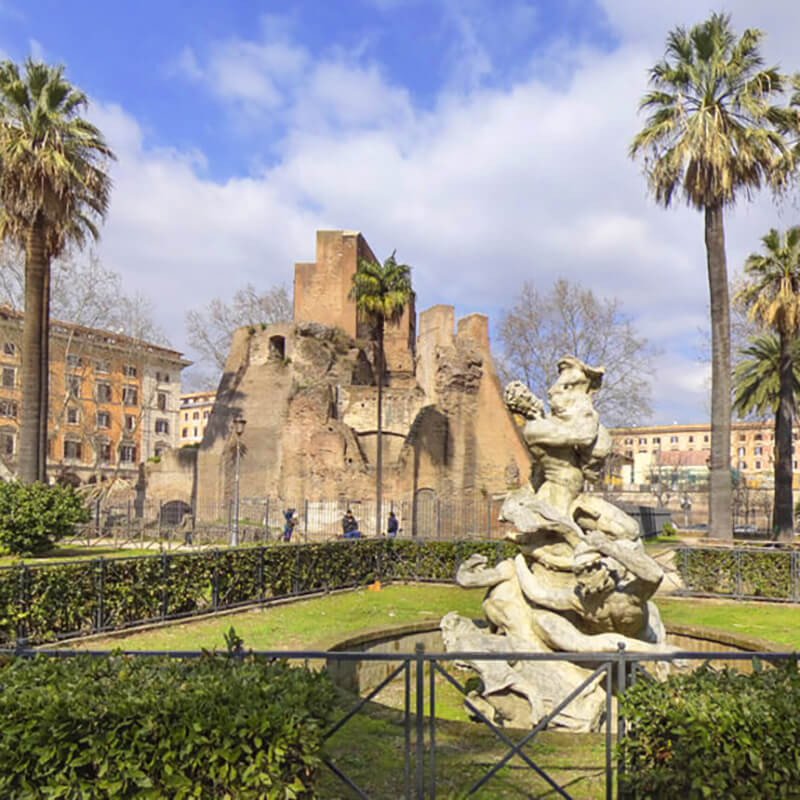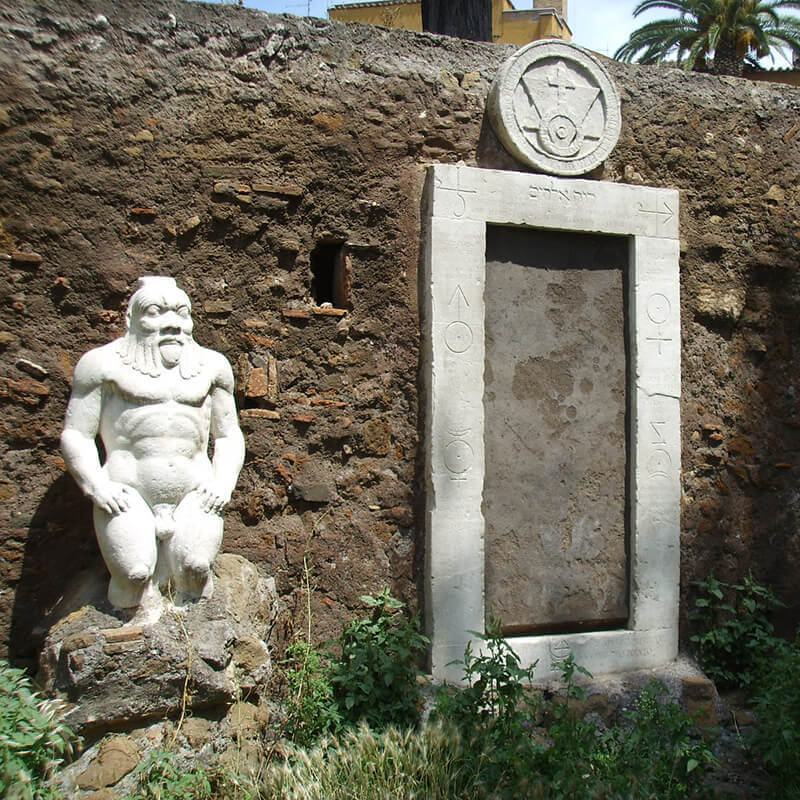Today we are going to discover the main water structures of the capital, exploring various itineraries for interesting walks that follow the course of aqueducts, thermal plants and fountains in Rome. You are ready? Off we go.
First itinerary: Porta Maggiore
Often walking along the large avenues and streets of Rome you find yourself in front of large city gates, one of these is Porta Maggiore, not far from Termini Station, Santa Croce in Gerusalemme and San Giovanni in Laterano. Porta Maggiore, as anticipated, is one of the gates in the Aurelian Walls, built towards the end of the 3rd century AD by the emperor Aurelian to defend Rome from possible attacks by barbarians. This gate is located in a crucial point of the perpetually busy modern city, but in ancient Rome it was also the point where eight of the eleven aqueducts that brought water to the city converged.
Porta Maggiore was built in opus quadrata of travertine with rustic ashlar blocks (unfinished), at the behest of Emperor Claudius in the 1st century AD, to allow the Claudius aqueduct (wanted by the emperor himself) to bypass the Praenestina and Labicana streets which then divided into a single street that exited the Porta Esquilina.
The name of this door has no historical justification but most likely derives from the use that the population of Rome normally made of it due to its grandeur, or from the relative proximity of the Basilica of Santa Maria Maggiore. Among the curiosities of this gate there is certainly the division of the two arches which still today lead to two ancient consular roads: on the left Via Casilina (once Via Labicana) and on the right Via Prenestina. If you look at the attic of Porta Maggiore (the upper part) you will notice that it is divided into two channels which correspond to the channels of the Anio Novus (the highest) and Aqua Claudia aqueducts, two of the most important aqueducts of ancient Rome, which could carry up to 2,000 liters of water per second.
Second itinerary: keep following the walls
Leaving Porta Maggiore and following the large arches that develop away from city traffic it is also possible to recognise remains of the Aqueduct of Nero (a secondary branch of the Claudian Aqueduct), built by the emperor Nero to supply the nymphaeum and the lake of his grandiose palace, the Domus Aurea.
In fact, from Piazza di Porta Maggiore the Neronian aqueduct continues towards Via Statilia with a series of superb arches made of brick, heading towards the Celio Hill and following the underground route of the Aqua Appia. Nero’s Aqueduct immediately took on great importance both for its efficiency and for the growing need for water by a continuously growing city, which would reach more than one million inhabitants in the period of its maximum glory.
The water of Nero’s aqueduct came from small lakes formed by two springs, called Curzia and Cerulea (in the upper Aniene valley, between today’s municipalities of Arsoli and Marano Equo), whose waters were extremely clear and their quality seems to have been inferior only to that of Acqua Marcia. There was no shortage of secondary springs, and flow regulation was ensured by exchanges with the Acqua Marcia aqueduct.
Nero’s Aqueduct was 68,681 km long, of which approximately 16 were surface viaducts, of which approximately 11 were on arches and 5 on bridges, and carried approximately 2,211 liters per second, but due to intermediate supplies and illegal interceptions, only half reached the “terminal castle” (Castellum), where the water joined that of the Anio Novus.
Third itinerary: Claudio/Neronian aqueduct
Following the remains of the Neronian Aqueduct we find the branches of the Claudio Aqueduct near three very important hills such as Colle Oppio, the Celio Hill and the Palatine. On the first stood a part of Nero’s grandiose private villa, the Domus Aurea. On the Caelian Hill we would have found the temple dedicated to the Divine Claudius while on the Palatine, the hill that connects to the birth of the city of Rome, we would have found imperial palaces, temples and spectacular terraces on circuses, hippodromes and amphitheatres. Structures that needed a large quantity of water, and in this case Frontinus (an architect of ancient Rome) informs that of the approximately 1,600 liters that reached the city, approximately 400 liters were for the imperial residence, approximately 500 liters for use public, approximately 500 liters for private individuals and approximately 200 liters for the increase of the Tepula and Iulia aqueducts (they had a lower flow rate than the other aqueducts).
An aqueduct that had a large flow rate like the Claudio/Neronian aqueduct could then be divided into various branches that brought the water to different points of the city, such as for example in Trastevere, starting from a secondary castle in the Navicella area and crossing the river on Ponte Emilio, today known as Ponte Rotto and again Villa dei Quintili, on Via Appia.
Fourth itinerary: public fountains
Leaving the area between Colle Oppio, Celio and Palatino you can go back towards the Esquiline and here you will find the remains of a famous public fountain in ancient Rome, we are talking about the Nymphaeum of Alexander, better known as the Trophies of Marius. It is an ancient fountain, the remains of which are preserved in Piazza Vittorio Emanuele II in the Esquilino district.
The building is a monumental fountain (nymphaeum) with the function of a terminal exhibition (munus) and a water distribution castle (castellum aquae). built in the final stretch of a branch of the aqueduct that came from Porta Tiburtina (Porta San Lorenzo) to head towards the Esquiline. The arches of this branch can be identified with the Claudio aqueduct or with the Anio Novus for altimetric reasons.
From this fountain come the two trophy sculptures, already in the Middle Ages called Trophies of Mario, and which from 1590 were placed on the balustrade at the top of the Cordonata that goes up to the Capitoline Hill. These sculptures are erroneously attributed to Gaius Marius for the victories over the Cimbri and the Teutons, but they date back to the Domitian era and were erected after the victorious campaigns against the Catti and Dacians in 89.
The monumental fountain of Mario’s Trophies occupies the highest part of the Esquiline and is entirely made of brick, probably originally covered in marble, as indicated by the numerous holes distributed over the entire structure. The fountain is divided into three levels, with different environments and channels still visible. The water came from the third floor on the rear side of the structure at a considerable height, about 10 meters above the ground. From the massive semicircular central body, it was divided into two parts and was then conveyed by five channels covered with cocciopesto into a basin (no longer existing today). From here, through various pipes placed inside the walls, the water collected in a second basin covered in cocciopesto and divided into niches that alternated with rectangular and arched shapes. Finally, a third collection tank (today partially preserved) once again collected the water on the lowest floor to supply the population located in the lower altitude areas of the city.
The Trophies of Mario are the only surviving fountain of the fifteen exhibition fountains of ancient Rome. The Nymphaeum of Alexander, due to its size and scenographic effects, can therefore be considered the forerunner and inspiring model of the great water exhibitions of the late Renaissance and Baroque (e.g. the Trevi Fountain, the Fontana dell’Acqua Paola on the Janiculum). It may be for this reason that it attracted the attention of many scholars already in the sixteenth century (Etienne Duparac, Giovanni Sallustio Peruzzi, Pirro Ligorio), who made sketches and sometimes rather imaginative reconstructions.
The Trophies of Mario in Piazza Vittorio are also the place that “hides” one of the main “hidden” curiosities of Rome, the Magic Door. If you visit Mario’s Trophies, don’t miss it!
Fifth itinerary: Roman therms
Leaving the Esquiline and the Trophies of Mario you can go back towards Termini Station where you can see the colossal structures of the Baths of Diocletian. Few know that the name Termini, contrary to what one might think, does not mean final destination, but derives from the Latin word thermae and refers precisely to the ancient Baths of Diocletian which together with the railway station dominate the Piazza dei Cinquecento. Public baths were another key site served by large public aqueducts that could carry up to 500 liters of water per second. They were built to serve the populous neighborhoods of the Quirinale, Viminale and Esquiline, and for their construction an entire neighborhood was dismantled, with insulae (ancient condominiums) and private buildings regularly purchased but which disrupted the pre-existing road network.
Similar to the Baths of Caracalla in shape, both were inspired by the Baths of Trajan, but were twice as large and occupied an area of almost 14 hectares, the largest in the ancient world. In the 5th century Olympiodorus stated that there were 2,400 pools and up to three thousand people could access the complex at the same time. The Baths of Diocletian suffered the fate of the vast majority of Roman monuments, used over the centuries as a quarry for building materials, including valuable ones, to be reused for other buildings, while the halls were used for various private uses at best as churches and convents at worst of hypotheses even as a place for breaking horses.
Sixth itinerary: the aqueduct park
If you are not yet satisfied with Roman aqueducts and engineering, you can take metro A from Termini Station towards Anagnina and get off at Giulio Agricola or Subaugusta to visit a very special park, the Parco degli Acquedotti.
The name derives from the presence of 6 of the 11 Roman aqueducts, plus a papal aqueduct, the Felice Aqueduct (superimposed on the Iulia), built in the Renaissance period and still used for irrigation: Anio Vetus (underground), Marcia, Tepula, Iulia and Felix (superimposed), Claudio and Anio Novus (superimposed). The Felice Aqueduct takes its name from Pope Sixtus V (born Felice Peretti), who for its construction decided to destroy some sections of the more ancient Marcio, Tepula and Iulia aqueducts. The aqueduct reused the sources of the Aqua Alexandrina and other neighbouring areas, ending its journey at the Fountain of Moses by Domenico Fontana.
Interested in discovering other anecdotes about water and the Eternal City? Follow me on my guided tour of the Squares, Palaces and Fountains of Rome, on the tour of the Fountains and Aqueducts of Rome or get in touch for info and reservations, and continue to follow us on Facebook, Instagram.

